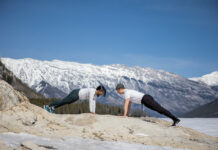The kettlebell swing burns, on average, 20 calories/minute. That’s 400 calories in 20 minutes. Today I want to share with you some tips and cues to help you and others get the most out of your swing.
The beloved hinge in the kettlebell swing focuses on training your glutes, the largest muscles on the backside of the body (your posterior chain). Learning how to hinge for most is an issue, as we do so much knee bending and in most of our training exercises, we think of squatting and doing lunges. Today I am going to not only teach you the swing with the kettlebell but also without the kettlebell.
Full Mobility Swing Without the Kettlebell
1. We are going to fold at the hips with the outside edges of our hands placed in the crease at the top of the thighs. Practice the fold then stand tall. Squeeze your butt/glutes at the top.
2. Let’s practice the swing now without the kettlebell. Place the kettlebell a couple feet in front of you — we are not going to swing it yet but just set it up! Stand tall, pull shoulders up, back, then imagine tucking the tips of the shoulders into an imaginary back pocket. This is your tall, confident stance.
3. Forward fold (hip hinge, push glutes back) then knee bend to get closer range to the kettlebell. Think of a straight long line from the kettlebell to wrist to elbow to shoulder. With a neutral spine, place hands, palms together, behind the kettlebell.
4. Pretend to hike the kettlebell back between your legs above the knees towards the pelvis (power source). Your wrists should be close to the inner part of your thighs. This is the backswing.
5. Drive your hips forward, stand tall, squeezing the glutes. You will let your arms come to shoulder level, breathing out at the top as if you are swinging the kettlebell.
6. Now let your arms fall to about midway then push your hips back and allow the imaginary kettlebell to go into that back swing. Wrists go again to the inner thighs.
7. To set the kettlebell down, you will come out of the backswing to your original start position.
Full Mobility Swing with the Kettlebell
1. Set the kettlebell on the floor approximately 18 inches in front of you.
2. Fold at the waist (pushing hips back), knee bend, and as you grip the handle with both hands, pull your shoulders back.
The kettlebell should be on an angle making a straight line from kettlebell to wrist, to elbow, all the way to your shoulder.
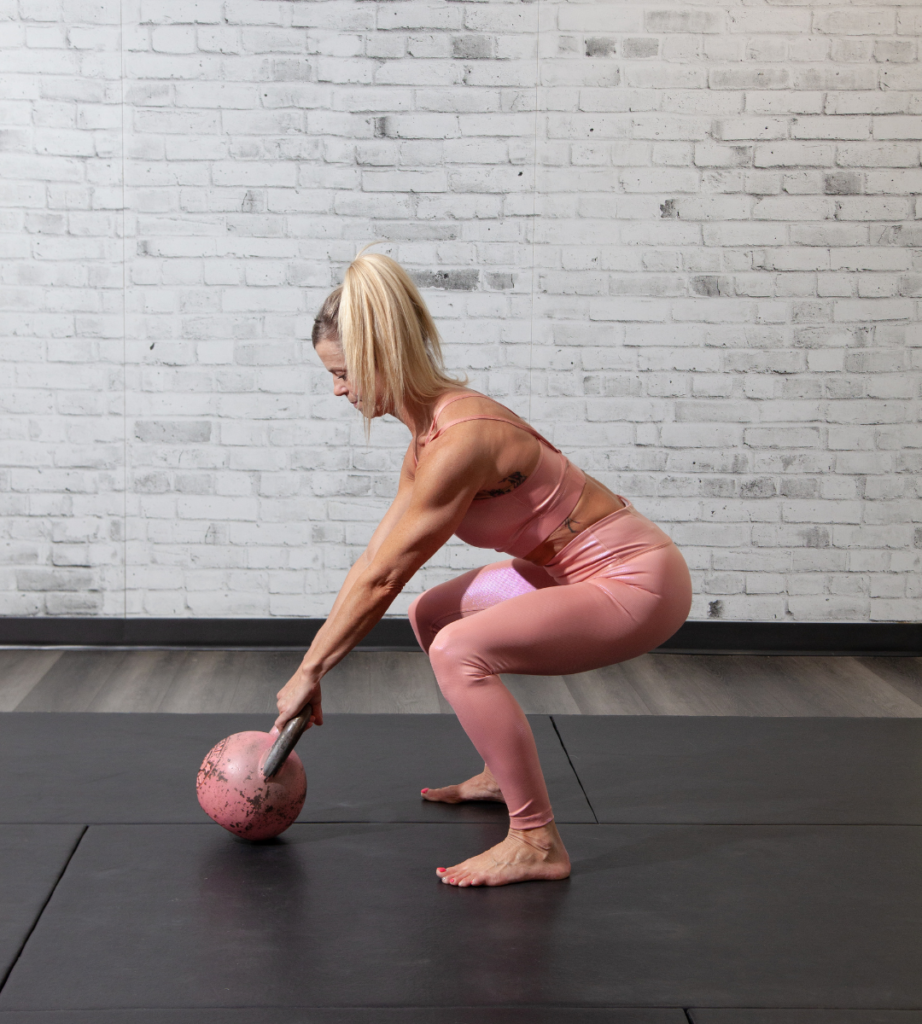
3. While gripping the handle, hike the kettlebell toward the hips, above your knees.
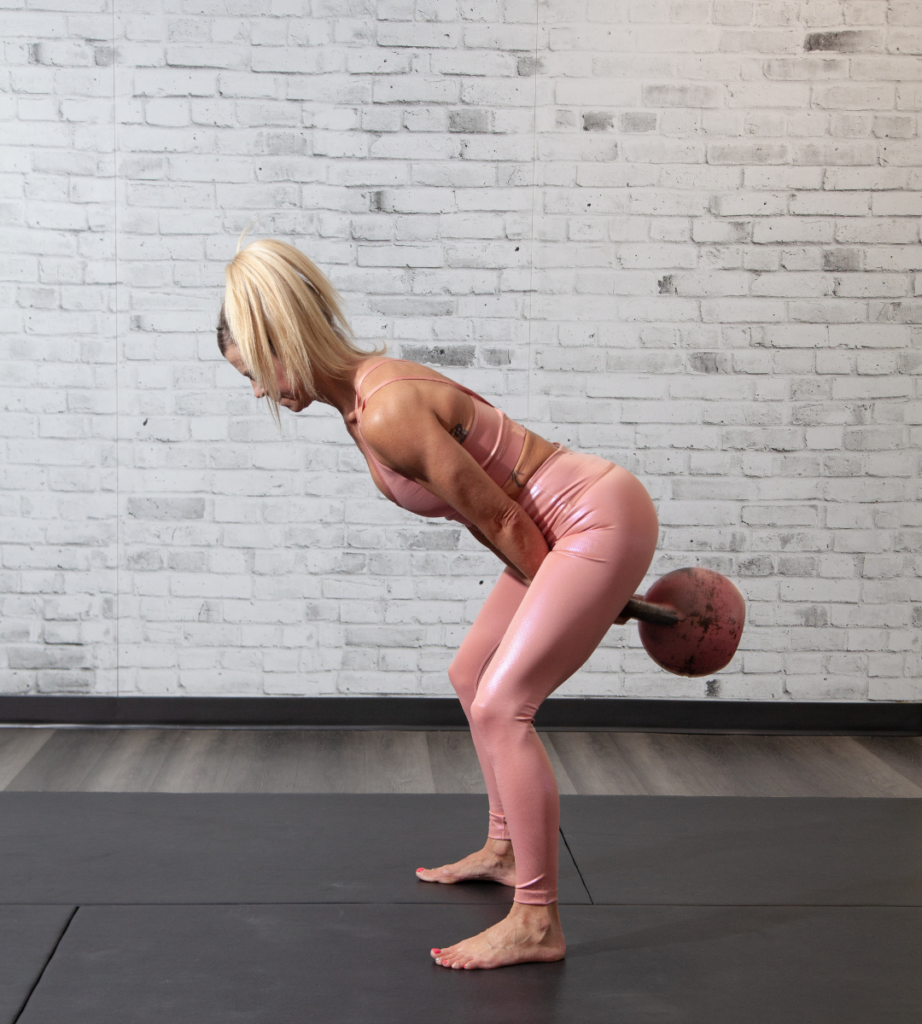
4. Swing the kettlebell up to shoulder level with your arms straight as you engage your glutes (squeezing at the top), standing tall. Your arms and the kettlebell should feel weightless through the entire motion.
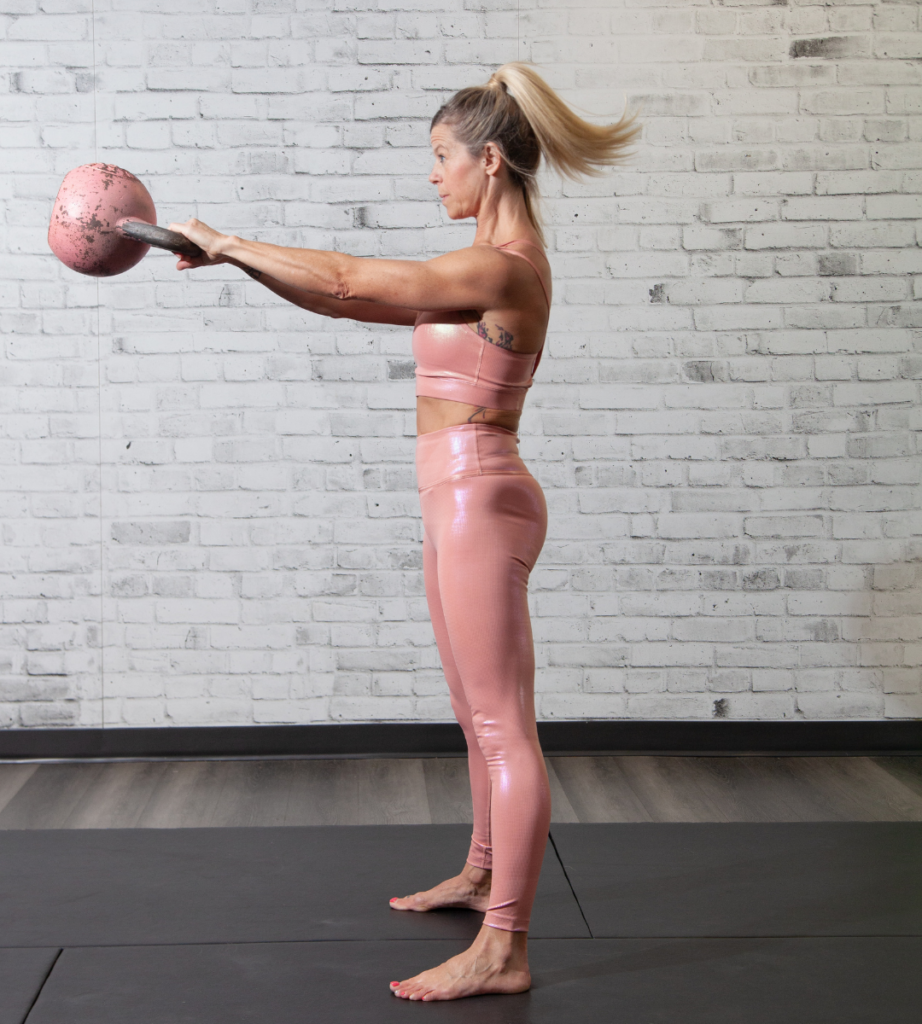
5. Let the kettlebell descend as you push your hips back keeping the kettlebell as close to your pelvis (and the power source, your glutes) as possible.
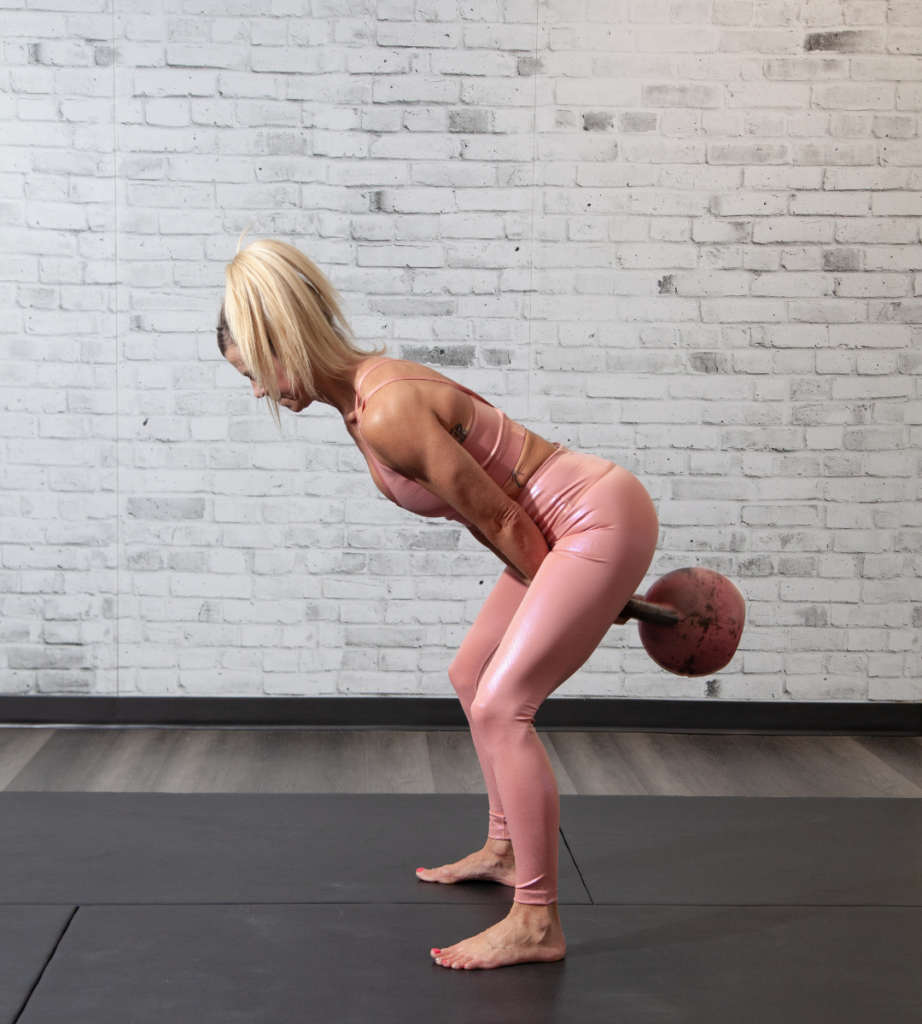
6. Repeat steps 1–4. Create a non-stop fluid motion. When you prepare to stop, take the kettlebell into that backswing, and with control, set the kettlebell right back to your start position (as seen below).

Tips: Stand tall, squeeze butt at the top, let your arms be an extension of the kettlebell and breathe out at the top!
How to Practice the Swing:
3-4 sets
Beginner – swing 30 seconds, rest 30 seconds
Intermediate – swing 40 seconds, rest 20 seconds
Advanced – swing 45 seconds, rest 15 seconds
Modifying the Full-Mobility Swing – Mid-Rack Position
The truth is, sometimes asking someone to hip hinge (butt push), knee bend, reach for a kettlebell and engage your lats is a big thing to ask. The swing is so beneficial but can still be effective without having to set up in that advanced swing stance and set it down back in that position. So, let us go into the swing from a mid-rack position.
Mid-Rack Position:
Before using a kettlebell let your arms just hang by your side, bend your elbows, keeping them close to your body, this will be your mid rack position.
1. Hold the kettlebell by the bottom of the horns close to the belly (round part of the kettlebell).
2. On the descent during the backswing, let your hands slide back down from the horns to the handle into that backswing motion. This is the same position as you are in with the kettlebell swing.
3. Allow the kettlebell to float to shoulder height as you stand tall and engage your glutes, repeating the swinging motion.
4. To end the swing, take the kettlebell from the backswing position. You will slide your hands from the handle to the horns of the kettlebell. Stand tall and squeeze your glutes.
Tip: It is important to practice sliding the hands instead of letting go of the kettlebell. When taking the kettlebell out of the backswing to the mid-rack position keep the kettlebell as close to the body as possible as this is where you are stronger.
Photography by Dustin Werbeski
Feature Image by Kyle Mahadeo submitted by Kettlebell Kickboxing Canada
You may also like: Why We Need Fitness More Than Ever



